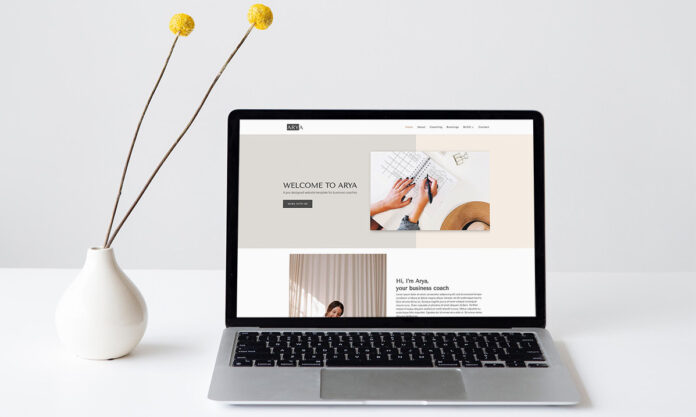
In today’s digital world, having a strong online presence is essential. One of the most important parts of that presence is your website. A website is not just a place for information; it’s often the first impression people have of your brand or business.
However designing a good website design isn’t always easy, and even an experienced web developer can make mistakes. Knowing what to avoid can save you time, money, and headaches.
In this guide, we’ll explore common mistakes and how to make sure your website works well for you and your visitors.
1. Focusing Too Much on How the Site Looks
One big mistake in web design is focusing too much on how the site looks rather than how it works for users. Imagine visiting a website that looks amazing but is hard to navigate.
Testing your site by asking real users for feedback can help you understand what people like and what needs improvement.
2. Inconsistency in Branding
A website is a big part of a brand’s identity, much like a storefront in a mall. People should be able to recognize your brand from the colors, fonts, and overall look of your site.
When different parts of a website don’t match in color, style, or tone, it can make visitors feel confused and unsure. Thus, hiring a freelance web developer can be beneficial to maintain branding continuity.

3. Not Checking the Speed
In the fast-paced world of the internet, nobody likes to wait. If a website takes too long to load, visitors might leave before they even see it. Every second of delay counts, and it can make people lose interest or trust in your site.
To make your website faster, use tools like Google PageSpeed Insights to find and fix any issues. Often, large images slow down sites, so optimizing (or shrinking) image sizes can help a lot.
4. Not Paying Attention to SEO
SEO, or Search Engine Optimization, is what helps search engines like Google find your website. If you want people to visit, you need to be visible in search results. This means using keywords, adding descriptions (called “meta tags”), and tagging images with relevant words.
SEO helps your site reach more people, so learning about SEO practices and applying them can help your website rank higher in search engine results.
5. Forget About Mobile Users
Today, more people browse the web on mobile devices than on computers. If a site looks good on a computer but is hard to read on a phone, you could be missing out on a big part of your audience. Making your site mobile-friendly isn’t just a nice-to-have feature; it’s a must.
A website should automatically adjust to fit smaller screens without making users zoom in or scroll sideways. Using tools like Google’s Mobile-Friendly Test can help ensure that your site is easy to use on all devices.

6. Not Using Analytics
Just like a map can help you find your way, analytics tools can guide your website’s development. Analytics show how people are using your site: where they spend the most time, which pages they visit, and where they might leave the site.
Tools like Google Analytics can provide useful insights that can help you make changes based on actual user behavior. This way, you can keep improving your site and making it better for your audience.
7. Writing Bad Content
What’s written on your website is just as important as how it looks. If there are spelling mistakes or if the content is hard to read, visitors might lose trust in your brand. Good content should be clear, easy to understand, and relevant to your audience.
Each page should have a specific purpose, whether it’s informing visitors, encouraging them to make a buy, or signing up for a newsletter. High-quality content can make your site more engaging and professional.
8. Not Looking for Web Design Trends
Web design trends change over time. Staying up-to-date with current styles and technologies can keep your website looking modern and appealing.
Trends like minimalist design and immersive scrolling are popular today, but it’s important to balance trends with your brand’s personality. Always make sure any design changes align with your brand.

9. Avoiding Testing
Before launching a website, and even after, it’s important to test how well it works. This includes checking if the design is easy to use and if there are any broken links. Usability tests can reveal what’s working and what isn’t, allowing you to make improvements.
A/B testing, where you try two versions of a page to see which performs better, can also be helpful. By testing different elements, a web developer can make informed decisions about your design.
10. Not Using Colors Wisely
Color can be powerful, but it can also overwhelm visitors if not used correctly. Different colors can evoke different emotions, so choose a color scheme that matches your brand’s personality.
For example, green often represents growth and freshness, while blue can feel calm and trustworthy. Balancing colors thoughtfully can create a positive experience for visitors.
11. No Balance For Your Design
A good website should feel balanced. If one part of the page has too much information, it can make the rest of the site look incomplete. Using grids to organize content can help create a balanced, harmonious design that feels pleasant and easy to navigate.

12. Ignoring the Audience
A successful website starts with knowing your audience. When you understand who you’re designing for, you can make decisions that appeal directly to their needs and interests.
For example, a site for kids might look very different from a site for business professionals. Conducting research on your audience’s preferences can help you design with purpose and relevance.
13. Not Asking Help When You Need It
Designing a website can be challenging, so don’t hesitate to ask for professional help. Whether you need assistance with technical aspects, design, or content, working with an expert can take your website to a higher level. Professionals have the experience to avoid common mistakes and can help make sure your website is effective and user-friendly.
14. Avoid Mistakes in Website Design
Creating a great website takes time and attention to detail, but it’s worth the effort. By avoiding common mistakes like poor user experience, inconsistent branding, slow loading times, and lack of SEO, you can build a website that attracts and keeps visitors. Remember, the best websites focus on user experience, branding, and clear goals.
For more helpful tips, check out the rest of our site today.











